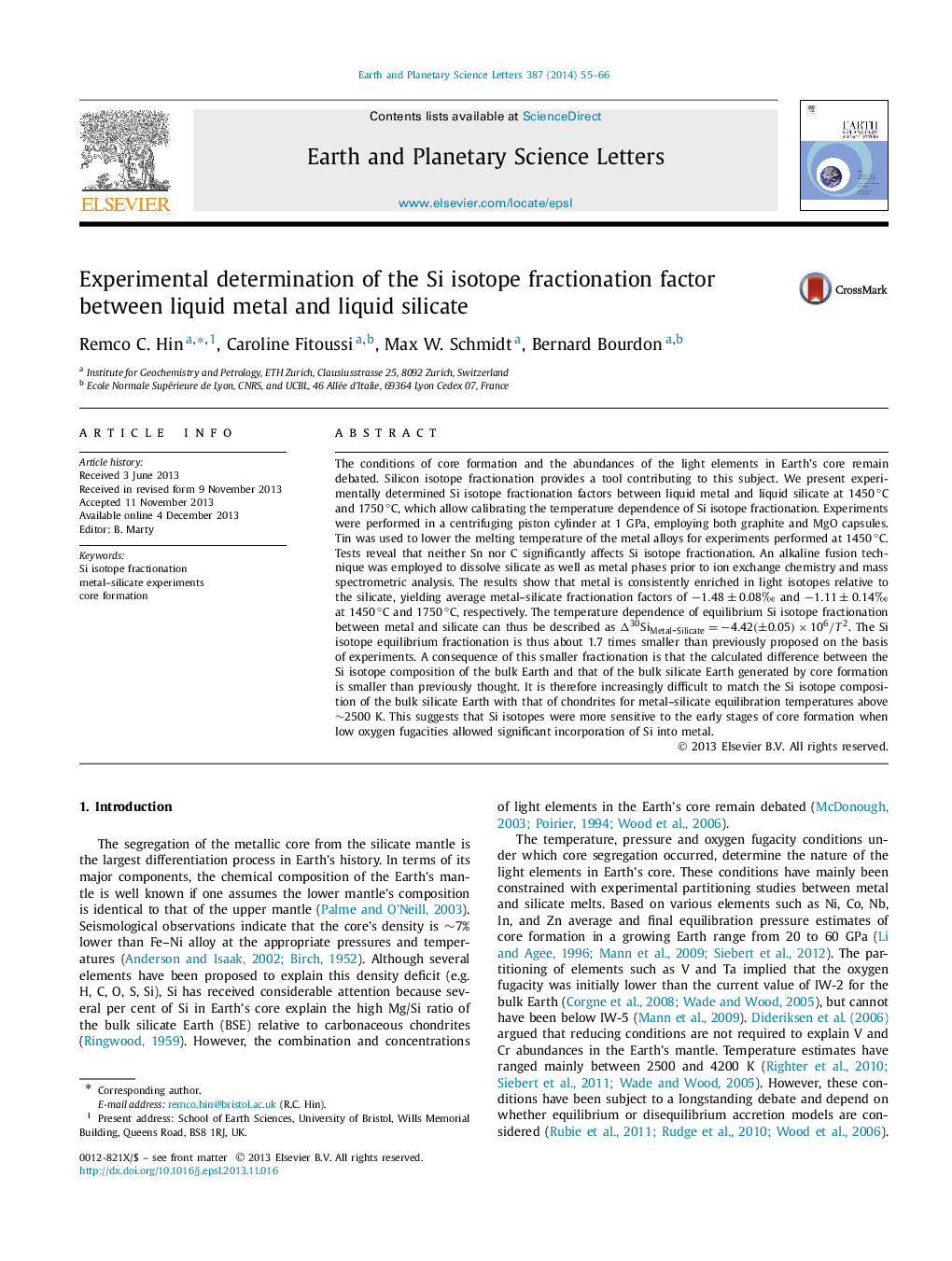| کد مقاله | کد نشریه | سال انتشار | مقاله انگلیسی | نسخه تمام متن |
|---|---|---|---|---|
| 6429631 | 1634769 | 2014 | 12 صفحه PDF | دانلود رایگان |

- Experimental study of Si isotope fractionation between metal and silicate liquids.
- Silicate is enriched in heavy Si isotopes, but less than previously observed.
- We modelled core and bulk Earth Si isotope compositions based on our results.
- Si isotopes were most sensitive to the early stages of core formation.
The conditions of core formation and the abundances of the light elements in Earthʼs core remain debated. Silicon isotope fractionation provides a tool contributing to this subject. We present experimentally determined Si isotope fractionation factors between liquid metal and liquid silicate at 1450â°C and 1750â°C, which allow calibrating the temperature dependence of Si isotope fractionation. Experiments were performed in a centrifuging piston cylinder at 1 GPa, employing both graphite and MgO capsules. Tin was used to lower the melting temperature of the metal alloys for experiments performed at 1450â°C. Tests reveal that neither Sn nor C significantly affects Si isotope fractionation. An alkaline fusion technique was employed to dissolve silicate as well as metal phases prior to ion exchange chemistry and mass spectrometric analysis. The results show that metal is consistently enriched in light isotopes relative to the silicate, yielding average metal-silicate fractionation factors of â1.48±0.08â° and â1.11±0.14â° at 1450â°C and 1750â°C, respectively. The temperature dependence of equilibrium Si isotope fractionation between metal and silicate can thus be described as Î30SiMetal-Silicate=â4.42(±0.05)Ã106/T2. The Si isotope equilibrium fractionation is thus about 1.7 times smaller than previously proposed on the basis of experiments. A consequence of this smaller fractionation is that the calculated difference between the Si isotope composition of the bulk Earth and that of the bulk silicate Earth generated by core formation is smaller than previously thought. It is therefore increasingly difficult to match the Si isotope composition of the bulk silicate Earth with that of chondrites for metal-silicate equilibration temperatures above â¼2500 K. This suggests that Si isotopes were more sensitive to the early stages of core formation when low oxygen fugacities allowed significant incorporation of Si into metal.
Journal: Earth and Planetary Science Letters - Volume 387, 1 February 2014, Pages 55-66